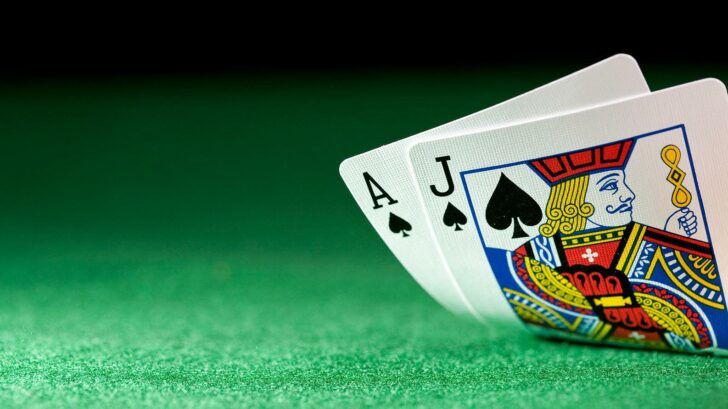Card Counting for Dummies: 7 Steps to Winning at Blackjack

You don’t have to be a genius to learn how to count cards. With a little math knowledge and a lot of practice, almost anyone can learn how it works.
Warning! This article is strictly for people with a lot of willpower. It takes a lot of determination to learn the art of counting cards in blackjack, but it’s worth it. Yes, there will numbers involved and yes, you will have to use your long-forgotten math skills. But, to be honest, practicing is the most important part of any casino strategy.
Mastering even the easiest card counting system can make a significant difference in blackjack, but it will not guarantee you instant success. The whole idea behind this strategy is to know when you have an advantage and, consequently, to know when to bet more. Using this technique, you will be able to minimize your losses and make decisions based on the remaining cards.
Here are seven essential things you need to learn, if you want to win at blackjack:
1. Learn basic blackjack strategy. This is the single most important thing you need to do. Once you’ve learnt the rules of the game, of course. Card counting won’t make a difference if you don’t know your basic strategy. And yes, this involves memorizing the recommended moves for each possible situation and for various types of game play.
Your main goal here is to reduce the house advantage as much as possible. You should know this strategy by heart, without carrying around books or strategy cards. Remember that card counting gives you a small – but significant – edge, so the outcome of the game depends on much more than your ability to count cards.
2. Understand what it means to count cards. The general Hi-Lo strategy is your first step to success and to make it as simple as possible, high cards have a value of -1, while low cards are worth +1. Add these up and you’ll get the running count.
Ok so what else do you need to know? That with tens you’ll have a better chance of hitting a blackjack and the dealer will be more likely to “bust”. With low cards, it’s exactly the opposite: they are bad for you and good for the dealer.
3. Learn the specific values associated with each card: cards 2-6 have a value of +1; cards 7-9 have no value; aces and cards worth 10 have a value of -1. Start at 0 and add each card that comes up to your tally.
Moving on to the actual Hi-Lo Strategy, a high ratio of high to low cards means that there are many high cards still in the shoe. This is when you can make bigger bets, if the deck is favorable. A deck with a positive number is good news for you. The higher the number, the more high-value cards remain to be played, and this means you can safely increase your bet.
Don’t range your bets too much, or you’ll attract attention. It’s not illegal to count cards, but some casinos refuse to accept players who use this strategy.
4. Time to practice. You’ll need a complete deck of cards, without the Joker. Start going through the cards and counting. If you’re doing it right, you should get 0 by the time the cards are gone. Practice this technique until you know all the values, without having to think about them for too long.
If you really want to win at blackjack, it’s important to count your cards fast, without being “discovered” by the casino staff. This is why you should aim to go through the entire deck in less than 25 seconds. Time yourself when you practice and master your strategy before actually heading to the casino.
5. Move on to pairs. Learning the value of each card is not quite enough. Counting cards should not be a mechanical gesture; you have to put a little thought into it and use your brain to make the whole process faster.
So when you have a Jack and a 4, you shouldn’t have to start calculating “…that’s -1 and +1, which equals 0”. You have to see beyond the numbers and follow the logic behind the strategy. What you have are a low card and a high card, so logic would dictate that they cancel each other out. All these things have to come to you naturally.
6. Learn how to count cards when using more decks. If every gambler knew how to apply this strategy, casinos would be making a lot less money. So to make everything a little bit more difficult, they are now using more than one deck. Make that five or six. This is where things can get confusing, because your running count might not be the true count if there are more decks in the shoe.
The true count is obtained by dividing the running count by the number of decks to be dealt. For example, if you counted +4 and there are 4 decks left in the shoe, your true count is +1. The tricky part is to know how many decks are left and you’ll have to find this out by taking a discreet look at the discard tray, between hands.
When you’re left with one deck, you either invert and multiply or just go with the running count. The first technique gives more accurate results, but it’s more complicated. For example, if you have ¾ left in the last deck and your count is +4, you multiply this value by 4, then divide by 3. That gives you a little over 5, so your true count is always a little bit higher than the running count.
7. Remember that when you’re in a casino, you won’t have the luxury of a quiet environment, where you can take all the time in the world and just focus on counting. So the last step before mastering the card counting strategy and actually trying it out at a casino is practicing with distractions.
Of course, there are other card counting methods you can learn, but this one is the most common and it’s pretty easy to learn, if you practice it enough. Always remember that these tricks are here to help you, not to instantly guarantee you thousands of dollars in cash. Never wager more money than you can afford to lose, especially if you’re still learning.
Now go over the basics of blackjack again and see if Hi-Lo card counting is the right strategy for you. And while you’re there, why not read about how blackjack strategy charts can help you win at a casino? Good luck!




